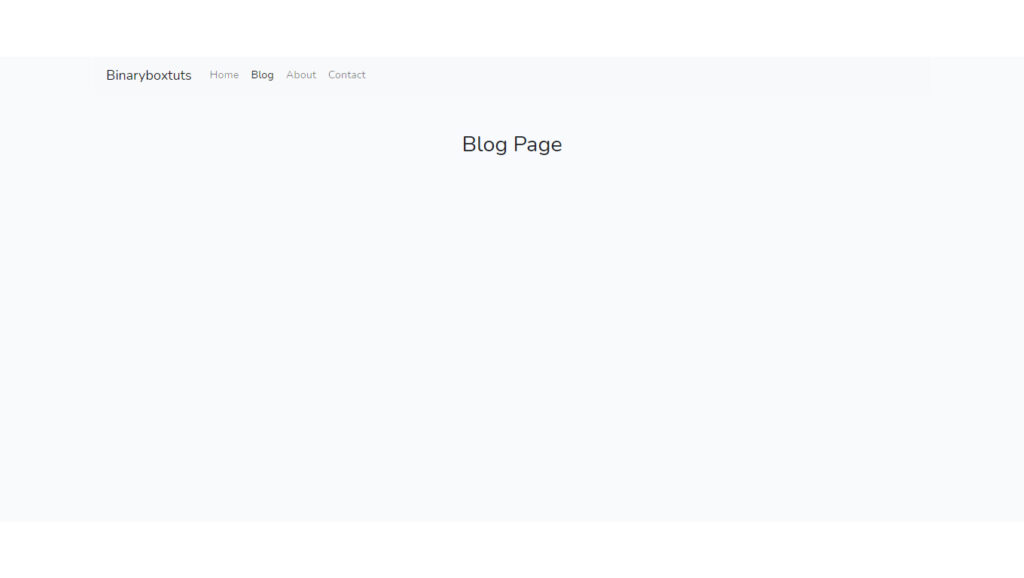Contents
Good day, welcome to this blog. Today I will be showing you how to develop a single-page application using ReactJS. Before we proceed let’s have a little bit of discussion.
React or also called React.js or Reactjs is a free and open-source JavaScript library used for building user interfaces(UI). It is one of the most popular JavaScript libraries for building the front end. React is created by Facebook and maintained by Facebook.
A Single Page Application (SPA) is a web application or website that utilizes only a single page and dynamically changes its content. The page does not reload unlike Multiple Page Application (MPA) which reloads pages to display new information.
Prerequisite:
- npm >= 7.24.0
- node >= v16.10.0
- npx >= 7.24.0
Step 1: Create A React App
First, select a folder that you want the React App to be created then execute this command on Terminal or CMD to create the React App:
npx create-react-app my-website
Step 2: Install packages
After creating a fresh react project, go to the react project folder and install react-router-dom and bootstrap.
- react-router-dom – a package used for client-side routing which allows the app to change the URL without making another request for a document from the server but instead it will immediately render the new UI or new information.
- bootstrap – a package of bootstrap framework
To install these packages. execute this command on Terminal or CMD.
npm i bootstrap
npm i react-router-dom
After installing bootstrap update index.js, Let’s import the bootstrap framework.
index.js
import React from 'react';
import ReactDOM from 'react-dom/client';
import './index.css';
import App from './App';
import reportWebVitals from './reportWebVitals';
import 'bootstrap/dist/css/bootstrap.css';
const root = ReactDOM.createRoot(document.getElementById('root'));
root.render(
<React.StrictMode>
<App />
</React.StrictMode>
);
// If you want to start measuring performance in your app, pass a function
// to log results (for example: reportWebVitals(console.log))
// or send to an analytics endpoint. Learn more: https://bit.ly/CRA-vitals
reportWebVitals();
Step 3: Routing and Components
We will now create the component, refer to the image below for the file structure.

You can create your own file structure but for this tutorial just follow along.
Let’s update the App.js file – We will add the routes here:
src/App.js
import React from 'react';
import { BrowserRouter as Router, Routes, Route } from "react-router-dom";
import Home from "./pages/Home"
import Blog from "./pages/Blog"
import About from "./pages/About"
import Contact from "./pages/Contact"
import NotFound from "./pages/NotFound"
function App() {
return (
<Router>
<Routes>
<Route exact path="/" element={<Home/>} />
<Route path="/blog" element={<Blog/>} />
<Route path="/about" element={<About/>} />
<Route path="/contact" element={<Contact/>} />
<Route path="*" element={<NotFound/>} />
</Routes>
</Router>
);
}
export default App;
Let’s create a new directory /src/components. Inside the directory, let’s create 2 files named Layout.js and Header.js – this will serve as a template.
src/components/Layout.js
import React from 'react';
const Layout =({children}) =>{
return(
<div className="container">
{children}
</div>
)
}
export default Layout;
src/components/Header.js
import React, {useEffect} from 'react';
import { Link, useLocation } from "react-router-dom";
function Header() {
const location = useLocation();
const pageLinks = [
{
"name": "Home",
"url" :"/",
},
{
"name": "Blog",
"url" :"/blog",
},
{
"name": "About",
"url" :"/about",
},
{
"name": "Contact",
"url" :"/contact",
},
];
useEffect(() => {
pageLinks.map((page)=>{
if(page.url === location.pathname) {
document.title = page.name;
}
});
}, [])
return (
<nav className="navbar navbar-expand-lg navbar-light bg-light">
<Link to="/" className="navbar-brand">Binaryboxtuts</Link>
<button className="navbar-toggler" type="button" data-toggle="collapse" data-target="#navbarSupportedContent" aria-controls="navbarSupportedContent" aria-expanded="false" aria-label="Toggle navigation">
<span className="navbar-toggler-icon"></span>
</button>
<div className="collapse navbar-collapse" id="navbarSupportedContent">
<ul className="navbar-nav mr-auto">
{
pageLinks.map((page, key) => {
return (
<li key={key} className={`nav-item ${location.pathname === page.url ? 'active' : ''}`}>
<Link to={page.url} className="nav-link">{page.name}</Link>
</li>
)
})
}
</ul>
</div>
</nav>
);
}
export default Header;
We will now create a directory src/pages. Inside the folder let’s create these files for our pages:
- Home.js
- Blog.js
- About.js
- Contact.js
- NotFound.js
src/pages/Home.js
import React from 'react'
import Layout from "../components/Layout"
import Header from '../components/Header'
function Home() {
return (
<Layout>
<Header/>
<div className="container">
<h2 className="text-center mt-5 mb-3">Home Page</h2>
</div>
</Layout>
);
}
export default Home;
src/pages/Blog.js
import React from 'react'
import Layout from "../components/Layout"
import Header from '../components/Header'
function Blog() {
return (
<Layout>
<Header/>
<div className="container">
<h2 className="text-center mt-5 mb-3">Blog Page</h2>
</div>
</Layout>
);
}
export default Blog;
src/pages/About.js
import React from 'react'
import Layout from "../components/Layout"
import Header from '../components/Header'
function About() {
return (
<Layout>
<Header/>
<div className="container">
<h2 className="text-center mt-5 mb-3">About Page</h2>
</div>
</Layout>
);
}
export default About;
src/pages/Contact.js
import React from 'react'
import Layout from "../components/Layout"
import Header from '../components/Header'
function Contact() {
return (
<Layout>
<Header/>
<div className="container">
<h2 className="text-center mt-5 mb-3">Contact Page</h2>
</div>
</Layout>
);
}
export default Contact;
src/pages/NotFound.js
import React from 'react'
import Layout from "../components/Layout"
import Header from '../components/Header'
function NotFound() {
return (
<Layout>
<Header/>
<div className="container">
<h2 className="text-center mt-5 mb-3">404 | Page Not Found</h2>
</div>
</Layout>
);
}
export default NotFound;
Step 4: Run the app
We’re all done, what is left is to run the app.
npm start
Open this URL:
http://localhost:3000
Screenshots:
Home Page

Blog Page

About Page

Contact Page

404 Page





